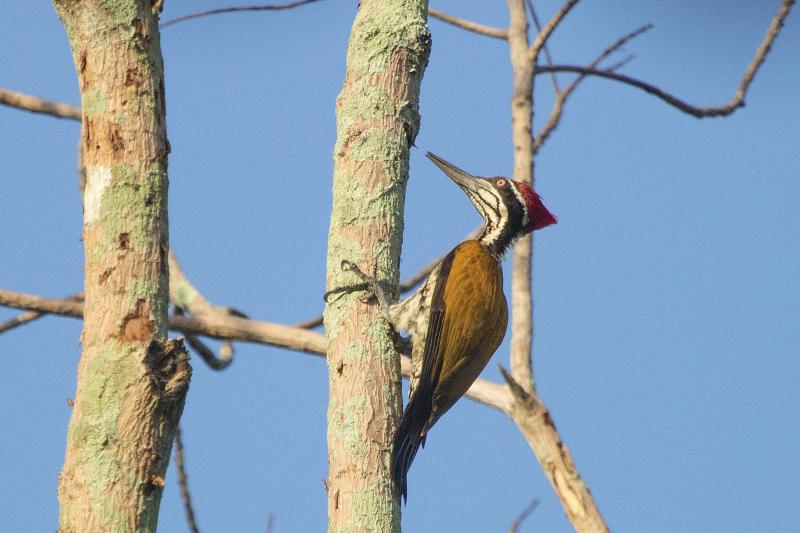Introduction
Forests, woodlands, parks and hedgerows cover a wide range of habitats within regional "biomes" including the coniferous forests of the northern latitudes known as the taiga or boreal forest, accounting for around 33% of land area, the temperate deciduous woodlands with 25% of land area, and the sub-equatorial and equatorial rain forests of the tropics, which account for around 45% of the forests left in the world. The temperate deciduous woodlands have been particularlly decimated by farming, urban development and industry. Parkland and hedgerows are an added habitat and we probably need to throw in gardens as well. A really mixed bag.
Threats
Some birds have adapted well to the changing of the landscape through human activity but most haven't. As forests are decimated across the planet species are disappearing at a sickening rate. Birds fare better than most as they can escape quicker and further and find new habitats. In some parts of the world they are still relatively abundant, particularly in the most bio-diverse tropical forest regions, but for how long?
Arboreal or Terrestrial?
Forest birds are "arboreal"(living in the trees), "terrestrial" (ground dwelling), or a mixture of both. Some of the best places to see forest species are botanic gardens and parks where they are more exposed and also more used to human activity. The dense forest found in South America, sub-Saharan Africa and parts of SE Asia protect many species. particularly in national parks, but they can be difficult or impossible to see and we are more likely to hear their calls.

Greater Flameback
The greater flameback like most woodpeckers is a bird that often reveals its presence by the rapid drumming sound it makes as it drills into trees which can be heard from a great distance. It frequents open forest habitats The male above, recognisable by its red crest, was photographed in the grounds of a resort near Kaeng Krachan National Park in Phetchaburi Province, Thailand.
Feeding
Like other members of the woodpecker family it uses its beak to bore into the trunks of trees and extract wood-boring anthropods with its long tongue. Its "zygodactyl" feet (two toes facing forwards and two backwards) are specially adapted for gripping tree bark and the stiff tail presses against the tree trunk to provide support.
Breeding
They lay their three to four white eggs in tree holes so colour camouflage is unnecessary. Greater flamebacks are widely distributed and locally common in India and eastwards to southern China, Malaysia, Sumatra and Borneo.
Wildfile Special
- The drumming sound a woodpecker makes with its beak is a way of communicating. A short drum is not very threatening, but a long drum might indicate a real threat. Mates message each other to agree whether or not to coordinate an attack on an intruding woodpecker.